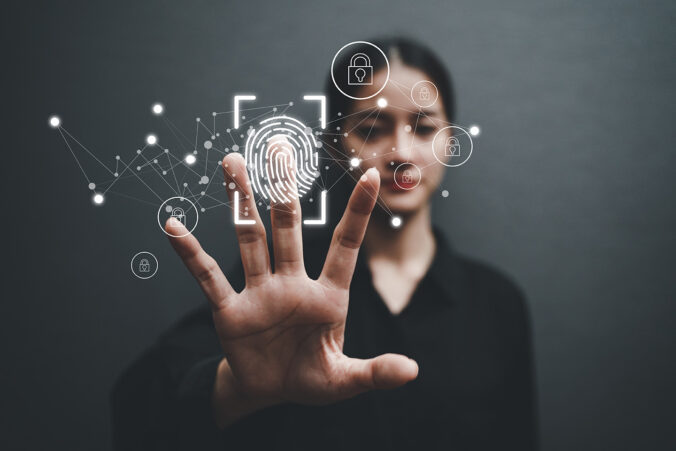In this blog post, I am going to go over some of the topics I learned in Module 2 of EDCI 338.
Digital Identity: Personal v/s Professional
Digital identity is the version of yourself that you show on online platforms. In real life, we have different identities for different avenues of our life like work, social circles etc. It works the same way online as well. I think of my digital identity as multiple layers. Some layers are only shown on my close friends story, others on my Instagram posts and some on my Linkedin account. It is extremely important for me to keep my digital identities separate as I only want certain people to see certain sides of me. I think of my digital space online as divided into two parts: Personal and Professional or Academic.
| Personal Spaces | Professional Spaces |
|
|
Some steps that I take to separate my digital identities seamlessly are:
- Keeping my ‘Personal Spaces’ accounts private
- Using my nickname on Personal accounts and full name on Professional accounts
- Using a professional headshot on my Linkedin
- Never adding colleagues and co-workers to my personal accounts
Digital Visitor and Resident Map
Digital visitors treat the web like a set of tools: they pop in, complete a task, leave little trace, and rarely worry about self‑presentation. They do not have a very public identity on the sites they visit. Digital residents inhabit spaces online: they maintain profiles, build relationships, leave data trails, and care about how they are perceived.
Below I have attached my Visitor and Resident Map based on my social activity:
Copy of Digital Visitor and Resident Map
What I interpreted from my digital map:
- I have a very private social identity. I am a Personal x Visitor on the sites that I spend my most time on.
- Professionally, I am only visible on my Linkedin account and this blog. Other spaces where I work professionally have a private identity,
- I am a Personal x Resident on some sites like Reddit and Facebook which I sometimes use for browsing and posting about my interests, and not my social life.
In the future, I see myself adding in a few more social spaces where I build my professional identity online. I see myself spending more time creating blogs and spending less time on photo-apps like Instagram and Snapchat.
Theories of Personalized Learning
Personalized learning is a style of learning that adapts to you- your pace, interests and study goals. I use a mix of constructivist (learn by actively building knowledge) and self‑directed (set goals, choose resources, evaluate progress) approaches that help me study smarter—not just longer.
Constructivist Moves I Use
- Start with what I already know before lectures.
- Work with classmates—hearing others views deepens understanding.
- Use examples from my life to help me memorize concepts
- Build artifacts: Quizlet decks, Notion tables, mini‑explainers I could teach someone else.
Self‑Directed Learning Cycle I’m Practicing
- Readiness check: How much time do I actually have this week?
- Set mini‑goals: “Finish Blog 2 by the weekend”
- Evaluate: Did I meet the goal? If not, what blocked me?
Privacy, Surveillance, and Digital Footprint Awareness
From my line in Post 1- The internet remembers. That’s because every click, upload, or account creates data traces. Even when we delete things, cached copies, screenshots, or third‑party archives can persist. This is why it is important to be intentional and careful with your activity online as every single move adds to your digital footprint.
I keep all my personal accounts private and sometimes search up my name on Google to see what shows up. From there, I remove posts that I do not want on the internet or change my privacy settings likewise. I also make sure to review if any of my passwords have been included in a data breach and then modify them as soon as I can. Another thing that I am cautious about is my location. I do not let any extra apps or websites access my location unless needed. I also don’t post my location on my private accounts in real-time.
Here is an interesting article I found from Harvard that talks about how to secure your digital footprint:
https://college.harvard.edu/guides/proactive-steps-secure-your-digital-footprint
Additional Resources
“The Future of AI in Education: Personalized Learning Explained ”
This 8 minute video that I have linked below talks more about how personalized‑learning theory and will let you see how it works in action.
References
Aratek. (2023, May 30). Real identity vs. digital identity [Illustration]. Aratek. https://www.aratek.co/news/digital-identity-what-it-is-and-why-it-matters-in-todays-world aratek.co
Harvard College. (n.d.). Proactive steps to secure your digital footprint. Harvard University. Retrieved July 21, 2025. https://college.harvard.edu/guides/proactive-steps-secure-your-digital-footprint

Hi Aashi,
I enjoyed reading your blog posts and how you saw digital identity as “multiple layers” where you supported this idea by providing concrete examples with LinkedIn vs closed-friends stories. I thought your Visitor/Resident map reflections were insightful in which you discussed balancing privacy with professional engagement.
I wonder if you could discuss more about privacy and surveillance about one potential challenge when you keep accounts so strictly separate, where having a personal and professional identity could be beneficial. For instance, one of my cousins is a photographer for weddings and bands. He often uses his instagram as a form of his portfolio for other professionals and bands to connect with him on top of his existing professional website and portfolio. Could this be of help for some inspiration for yourself or possibly other content creator artists that you’ve come across?
Overall, I thought this was a very strong blog post and showcased how you use online platforms on a daily basis.